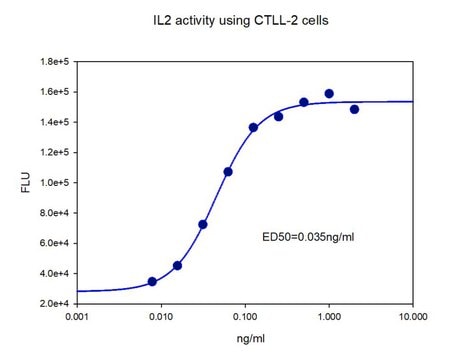SBR00013
Actinomycin D, Ready Made Solution
from Streptomyces sp., 2 mg/mL in DMSO
Synonym(s):
Actinomycin D solution from Streptomyces sp., Actinomycin IV, Dactinomycin
About This Item
Recommended Products
biological source
Streptomyces sp.
Quality Level
description
Ready Made Solution
form
liquid
storage condition
protect from light
concentration
2 mg/mL in DMSO
color
dark orange
antibiotic activity spectrum
neoplastics
Mode of action
DNA synthesis | interferes
storage temp.
−20°C
InChI
1S/C62H86N12O16/c1-27(2)42-59(84)73-23-17-19-36(73)57(82)69(13)25-38(75)71(15)48(29(5)6)61(86)88-33(11)44(55(80)65-42)67-53(78)35-22-21-31(9)51-46(35)64-47-40(41(63)50(77)32(10)52(47)90-51)54(79)68-45-34(12)89-62(87)49(30(7)8)72(16)39(76)26-70(14)58(83)37-20-18-24-74(37)60(85)43(28(3)4)66-56(45)81/h21-22,27-30,33-34,36-37,42-45,48-49H,17-20,23-26,63H2,1-16H3,(H,65,80)(H,66,81)(H,67,78)(H,68,79)
InChI key
RJURFGZVJUQBHK-UHFFFAOYSA-N
Looking for similar products? Visit Product Comparison Guide
Application
<li><strong>Regulation of Immune Checkpoints in Cancer:</strong> Actinomycin D is pivotal in studying the ADAR-mediated RNA editing processes that regulate PVR immune checkpoints in colorectal cancer, thus demonstrating its crucial role in cancer immunotherapy research and providing insights into novel therapeutic targets (Qian et al., 2024).</li>
<li><strong>Chemotherapy and Immunotherapy Combination:</strong> The use of Actinomycin D in combined chemotherapy highlights its effectiveness in salvaging multi-chemotherapy agent and avelumab resistant choriocarcinoma, showcasing its potential in overcoming resistance to treatment in gynecological cancers (Lehmann et al., 2023).</li>
<li><strong>Advancements in Dental Medicine:</strong> Actinomycin D is used in regulating gene expression crucial for tissue regeneration and repair in dental health and it is also used to determine RNA stability assay (Pan et al., 2023).</li>
<li><strong>Cancer Progression Research:</strong> The study on hypoxia-induced lncRNA in hepatocellular carcinoma progression, where RNA-binding proteins play a critical role, aligns with Actinomycin D′s application in transcriptional inhibition and its influence on mRNA stability, essential for understanding cancer biology and developing targeted therapies (Tuo et al., 2023).</li>
</ul>
Biochem/physiol Actions
Actinomycin D has been shown to be an inhibitor of the minus-strand transfer step in reverse transcription, and is therefore used in studies and suppression of HIV-replication. It has also been shown to suppress programmed cell death of PC12 cells induced by etoposide, an inhibitor of topoisomerase II.
In cell culture, actinomycin D is used as a selection agent. Actinomycin D binding to yeast in ribosomal RNA has been studied. The sensitivity of various strains of E. coli to actinomycin D and the mechanism of binding has been studied. Actinomycin D is also used in molecular biology as a DNA intercalator which blocks the progression of RNA polymerases.
Packaging
Caution
Preparation Note
Signal Word
Danger
Hazard Statements
Precautionary Statements
Hazard Classifications
Carc. 1B
Storage Class Code
6.1C - Combustible acute toxic Cat.3 / toxic compounds or compounds which causing chronic effects
WGK
WGK 3
Flash Point(F)
188.6 °F - closed cup
Flash Point(C)
87 °C - closed cup
Certificates of Analysis (COA)
Search for Certificates of Analysis (COA) by entering the products Lot/Batch Number. Lot and Batch Numbers can be found on a product’s label following the words ‘Lot’ or ‘Batch’.
Already Own This Product?
Find documentation for the products that you have recently purchased in the Document Library.
Customers Also Viewed
Our team of scientists has experience in all areas of research including Life Science, Material Science, Chemical Synthesis, Chromatography, Analytical and many others.
Contact Technical Service








